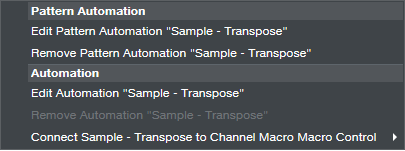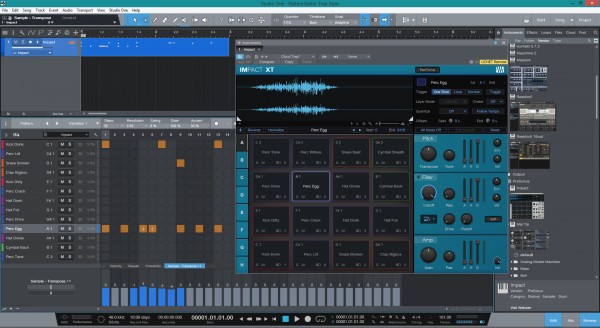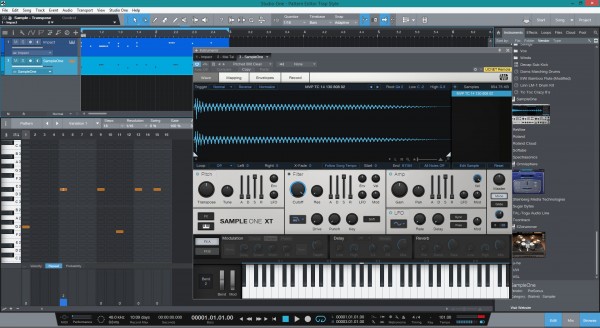Thank you for your question. Here are some things to consider:
1. Adjusting the pitch for Trap style rolls depends on the way in which you are using the Pattern Editor.
A. If you are using Impact XT with the Pattern Editor, you can adjust the pitch of a sample (pad) by automating the Pitch parameter of the pad. The Pattern Editor has automation lanes for doing this. Right-Click on the "Pitch" parameter for the pad you want to automate and choose "Edit Pattern Automation "Sample - Transpose"". This creates an automation lane in the Pattern Part where you can change the pitch for ever step by drawing them in with your mouse. This actually works well for variable pitch with trap style rolls. When using Impact XT, each lane represents a pitch in the piano roll, so because it's a drum sampler, pitches are assigned to individual samples.


B. If you are using a pitched instrument or Sample One XT with a sample mapped across the keyboard, you can use the Melodic Mode of the Pattern Editor to do variable pitch changes in time. For instance, a hi hat mapped in Sample One XT can be sequenced with variable pitches by drawing across the Melodic Mode key range.

2. The performance of a sample in Impact XT, especially when doing successive triggers as in Trap Style rolls, depends a lot on some key parameters. Experiment with different "Choke" modes, "One Shot" "Normal". Typically a "One Shot" with the choke set to "Self" will restart a re-triggered sample from the beginning NOT in the middle of the sample at a non-zero crossing point as was mentioned in the video. There are also other factors like the actual sample being used that will play into how it sounds when re-triggered very fast as in a Trap style roll. Try adjusting the starting point of the sample from within the Impact XT waveform window. Moving it a couple of samples could make the difference depending on the sample.
I hope this helps to clear things up. Let us know if you have additional questions.